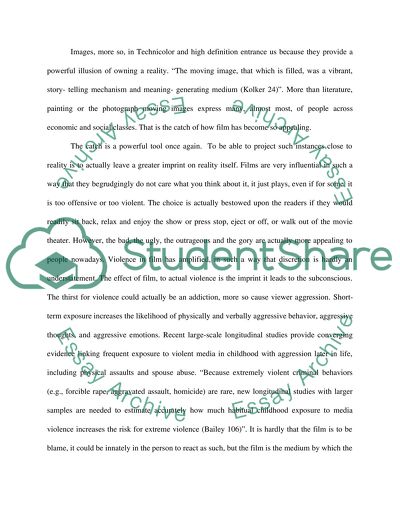Cite this document
(The Influence of Violence in Film Movie Review Example | Topics and Well Written Essays - 2250 words, n.d.)
The Influence of Violence in Film Movie Review Example | Topics and Well Written Essays - 2250 words. Retrieved from https://studentshare.org/sociology/1504150-the-influence-film-has-had-on-violence
The Influence of Violence in Film Movie Review Example | Topics and Well Written Essays - 2250 words. Retrieved from https://studentshare.org/sociology/1504150-the-influence-film-has-had-on-violence
(The Influence of Violence in Film Movie Review Example | Topics and Well Written Essays - 2250 Words)
The Influence of Violence in Film Movie Review Example | Topics and Well Written Essays - 2250 Words. https://studentshare.org/sociology/1504150-the-influence-film-has-had-on-violence.
The Influence of Violence in Film Movie Review Example | Topics and Well Written Essays - 2250 Words. https://studentshare.org/sociology/1504150-the-influence-film-has-had-on-violence.
“The Influence of Violence in Film Movie Review Example | Topics and Well Written Essays - 2250 Words”, n.d. https://studentshare.org/sociology/1504150-the-influence-film-has-had-on-violence.


